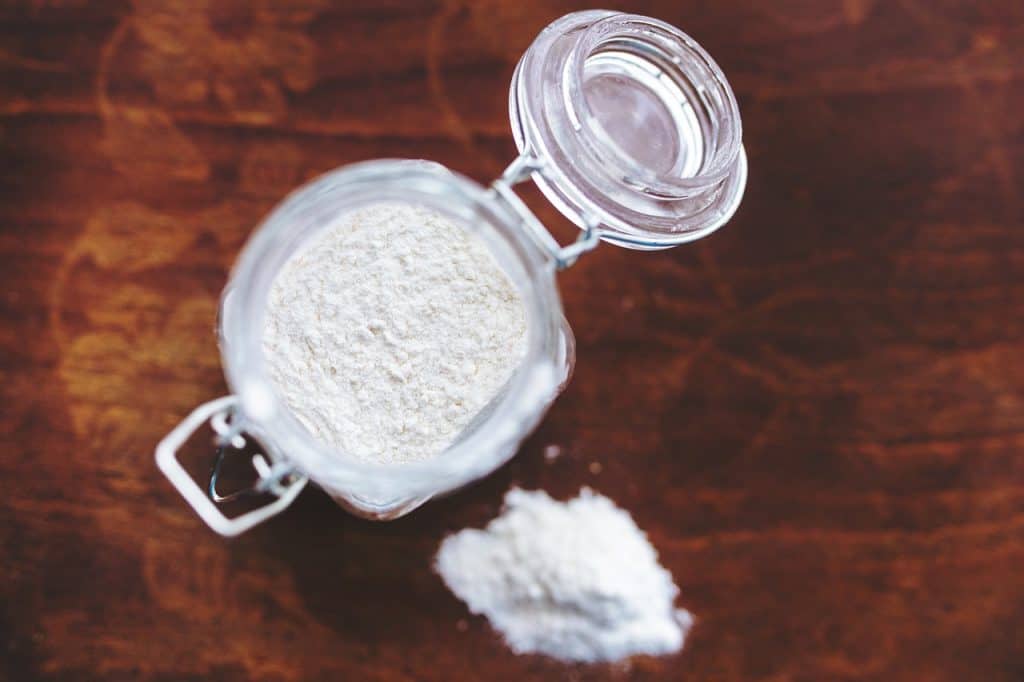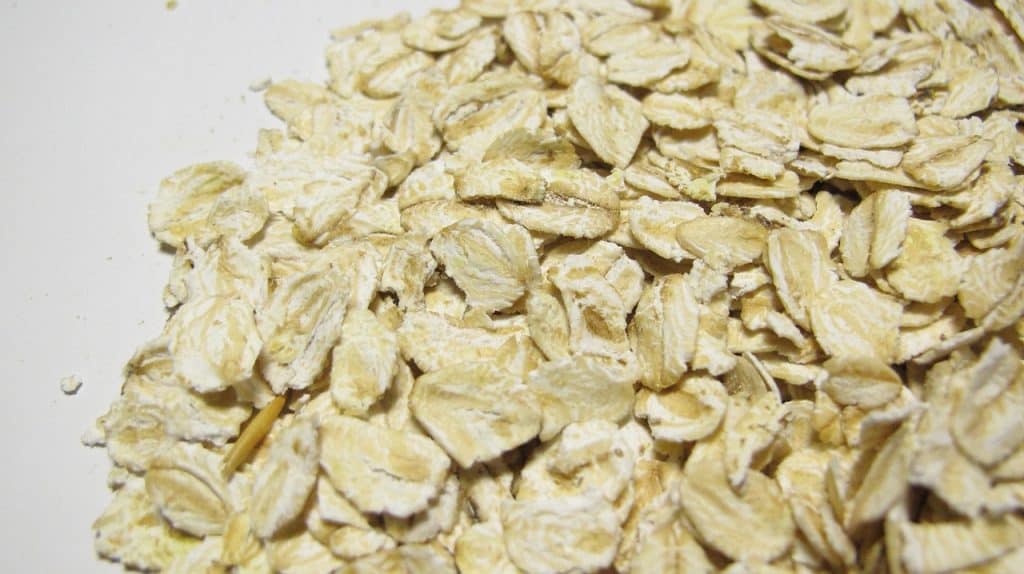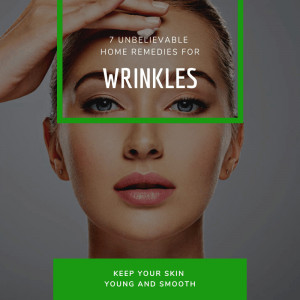Discovering red, itching spots over your body is not a pleasant experience, as many of you know. However, it’s one of the most common skin problems. After all, everyone has dealt with skin rashes at some point in their lives. But do you know how to get rid of them at home? No? Then don’t stop reading.
A “rash,” as most people know it, actually refers to any inflammation/ discoloration that changes the normal appearance of the skin. Most often, rashes are not a serious problem, and you can use many home remedies for skin rashes to relieve the pain and the itching.
However, depending on the cause, rashes can be contagious. That’s why it’s a good idea to speak with your doctor at least on the phone before you attempt to cure yourself at home, less you spread the disease to your family and friends.
So, today I’m going to explain to you the most common rash diseases and I’m going to offer you some mind-blowing home remedies for skin rash.
What causes skin rashes?
As I already said, skin rash is a broad definition, which covers anything that leads to skin inflammation and discoloration. As such, the rash might be the result of many different things from simple allergies to more serious diseases.
Since it would take a whole book to discuss the many things that could be responsible for skin rashes, I’m going to mention the most common ones:
Contact dermatitis
When your skin gets red after coming into contact with irritating substances or allergens, it’s called contact dermatitis. Since different people are allergic to different things, it might take you a while to figure out if the rash is because of a product you use. Most often the culprits are:
- Beauty products
- Soaps and detergents
- Dyes
- Contact with chemical substances
- Touching poisonous plants like poison ivy or poison oak.
Contact dermatitis could also be a side effect of your medications, so read carefully through the possible side effects of the medicine.
Insect bites
Bites by mosquitoes, fleas, or ticks might also cause a rash. However, if you get a tick do not attempt to remove it at home, but seek professional help.
Eczema
Contact dermatitis is one type of eczema. Other types include atopic dermatitis (an intense immune system reaction to an allergen outside the body), dyshidrotic eczema, nummular dermatitis, seborrheic dermatitis (often affects the scalp), and stasis dermatitis. You can find more information about these conditions here.
Psoriasis
An autoimmune condition, which speeds up the production of skin cells. As a result, they build up rapidly on the skin and form scales and patches.
Systemic lupus erythematosus
Lupus, also known as SLE, is another autoimmune disorder in which the body attacks healthy tissues. One of the common symptoms is a butterfly rash on the face.
- Ringworm – A fungal infection, which causes a distinctive ring-shaped rash. It’s contagious.
- Rosacea – a chronic skin condition characterized by redness, swelling, pimples, and dilated blood vessels on the face.
- Diaper rash
- Scabies – the body develops an allergic reaction to the mites, which burrow into the skin
- Chickenpox (viral and contagious)
- Measles
- Scarlet fever (bacterial infection)
- Fifth disease
In addition to these, you can also get a rash from too much sun exposure, the so-called heat rash.
What are the signs and symptoms of a rash?
Usually, the rash has the following symptoms:
- Redness
- Blisters
- Scaling
- Itching
- Bumps or pimples
As you’ve already shown, the rash is a very common symptom of many diseases, so it’s important to know when you have to seek medical help. So, you should give your doctor a call, if you notice any of these bothersome signs:
- Fever over 38°C
- Increased pain
- Difficulty breathing, tightness in the throat
- Excessive swelling
- Dizziness
- Confusion
- Diarrhea
- Vomiting
- A severe headache and neck pain
- A sore throat
If you’ve been bitten or scratch by an animal and develop rash and fever, you should seek medical help immediately. You probably have developed an infection. What’s more, tick bites, for example, transmit dangerous diseases.
Home remedies for skin rashes

The first step you should take when you discover a rash is to determine what you’re dealing with so that you can apply the best possible remedy. If the cause is obvious, e.g., a bite or eczema, you can proceed and use these home remedies for skin rash. You can take some over-the-counter medicine to take care of any lingering pain.
However, if the rash develops suddenly with no apparent cause and you’re observing other symptoms as well, I would recommend that you do not attempt to diagnose yourself over the Net. Go to your doctor for advice.
1. Essential oils are an excellent ally against rashes
Prices pulled from the Amazon Product Advertising API on:
Product prices and availability are accurate as of the date/time indicated and are subject to change. Any price and availability information displayed on [relevant Amazon Site(s), as applicable] at the time of purchase will apply to the purchase of this product.
You’ve probably used essential oils to reduce stress and anxiety, but they are also perfect for:
- Fighting infections
- Boosting the immune system
- Alleviating aches
Most of them have potent anti-inflammatory, antibacterial, and anti-fungal properties so that they deal with the inflammation quickly. In addition to this, essential oils are antiseptic, so they will prevent further complications.
What’s more, lavender, for example, has an analgesic effect, which means that it is useful for reducing pain and swelling, which sometimes accompany the rash.
There are many essential oils you can use, but I’m going to offer you two recipes:
Necessary ingredients:
- Tea tree oil
- Carrier oil (for example, coconut)
- A bowl
- A measuring cup
Process:
- Measure 12 drops of tea tree oil in the bowl.
- Get the measuring cup and fill it with 30 ml of the carrier oil.
- Add it to the tea tree oil.
- Mix the two ingredients well.
- Apply the concoction to the affected area. (You can soak a cotton ball)
- Repeat daily unit the rash disappears.
Alternatively, here’s what to do if you wish to use lavender.
Necessary ingredients:
- Lavender oil
- Olive oil
- A bowl
- A measuring cup
Process:
- Pour 12 drops of lavender oil in the bowl.
- Measure 30 ml of olive oil.
- Add it to the bowl.
- Stir.
- Apply the mixture to the affected spots.
- Repeat daily for better results.
Notes: Essential oils are concentrated substances, which means that you should not overuse them or use too much at once. If you experience any adverse reactions, you must stop the treatment at once, wash the area with clean water and consult your doctor. I recommend that you read this article to learn more about using essential oils safely.
2. Cold is simple, but efficient
Prices pulled from the Amazon Product Advertising API on:
Product prices and availability are accurate as of the date/time indicated and are subject to change. Any price and availability information displayed on [relevant Amazon Site(s), as applicable] at the time of purchase will apply to the purchase of this product.
The first thing you can do when you spot the bothersome, itching rash is to apply a cold compress. It sounds simple, but it’s perfect when your condition is the result of an insect bite, heat, or poison ivy. The cold will help with the swelling and alleviate the pain and the itching.
Necessary ingredients:
- Ice cubes
- A plastic bag
Process:
- Get some ice cubes from the fridge.
- Put them in a plastic bag.
- Seal the bag.
- Place the cold compress on the affected patch.
- Wait a few minutes and remove it.
- Repeat throughout the day.
- Do this until the rash improves.
Alternatively, if you don’t have any ice cubes lying around in the refrigerator, try this:
Necessary ingredients:
- Ice-cold water
- A clean washcloth
- A bowl
Process:
- Fill a bowl with ice-cold water.
- Soak the washcloth in the bowl.
- Squeeze the excess water.
- Place the cloth on the affected spot.
- Wait 10 minutes and remove it.
- Repeat daily.
Notes: You should not place the ice cubes directly on the skin.
3. Baking soda for itch relieving

I’m sure that you’ve heard all about baking soda and its remarkable benefits for the skin. But can it make your rash disappear? Yes, it can because it has antibacterial and antimicrobial properties. What’s more, the anti-inflammatory effect will soothe the itching skin and combat the redness and the swelling. In addition to this, baking soda has the ability the restore the PH balance of your skin and promote healing.
Necessary ingredients:
- Baking soda
- Water
- A bowl
Process:
- Mix baking soda and water in proportions 1:3.
- Stir the ingredients well until you have a paste.
- Apply the paste to the rash.
- Wait a few minutes.
- Rinse with water.
- Repeat for a few days.
Alternatively, you can add coconut oil to baking soda. Coconut oil is great for the skin because it has a potent anti-inflammatory effect, and it soothes the skin.
Necessary ingredients:
- Baking soda
- Coconut oil
- A bowl
- Water
Process:
- Pour some baking soda into the bowl.
- Mix with coconut oil until you have a thick paste.
- Apply to the affected spot.
- Wait five minutes.
- Rinse with water.
- Repeat twice a day unit the rash improves.
Notes: Baking soda and water are perfect for treating insect bites. In fact, some over-the-counter lotions contain baking soda. However, be careful if you have sensitive skin.
4. Oatmeal helps with the inflammation

Do you know that oatmeal is full of antioxidants, which can help your body fight the free radicals damaging your cells? No? Well, you should also know that oatmeal is perfect for reducing inflammation and getting rid of itchy and dry skin. It’s an excellent choice for treating eczema, sunburn, allergies, or poison ivy.
One of the best ways to exploit the benefits of oatmeal is to make an oatmeal bath, especially if the rash has spread to hard-to-reach places.
Necessary ingredients:
- Oatmeal
- Milk powder
- Honey
- A cheesecloth
- A string
- Bathtub
- A bowl
- Water
- A cup
- A teaspoon
- Moisturizer
Process:
- Measure half a cup of oatmeal and pour it into the bowl.
- Add one-quarter cup of milk powder.
- Then add two teaspoons of honey.
- Mix the ingredients well.
- Pour the concoction in the cheesecloth.
- Tie the cloth with the string tightly.
- Fill the bath with water.
- Place the cheesecloth in the bathwater.
- Get into the tub.
- Soak for 15 minutes.
- Get out of the bath and pat your skin dry.
- Apply moisturizer.
- Repeat daily.
Alternatively, you can mix oatmeal and yogurt if you’re dealing with a rash on your face.
Necessary ingredients:
- Oatmeal
- Yogurt
- Honey
- Water
- A bowl
Process:
- Combine equal amounts of oatmeal and yogurt.
- Add a small amount of honey.
- Mix the ingredients unit you have a thick paste.
- Apply it on the rash.
- Wait 30 minutes.
- Rinse with water.
- Repeat.
Notes: You can also grind oatmeal in the blender, mix it with water to make a paste and apply it to the skin. However, stop if you feel any irritation or burning.
5. Petroleum jelly is efficient for diaper rash
I’m sure that some of you have used petroleum jelly already as a way to get rid of diaper rash so that they are already familiar with its effects. But you probably don’t know that it has also proven its efficacy for minor skin wounds as studies show. What’s more, it forms a protective layer over the skin and moisturizes it at the same time.
Necessary ingredients:
- Petroleum jelly
- Water
Process:
- Clean the area with water.
- Pat it dry.
- Scoop a little petroleum jelly with your fingers.
- Apply it to the affected spot.
- Repeat several times during the day.
Notes: Use petroleum jelly only externally, so do not eat it or insert it anywhere. Keep in mind that it might cause an allergic reaction in people with sensitive skin, so stop the treatment if the irritation worsens.
How to prevent rashes?
Unfortunately, you can’t always know what you’ll have an allergic reaction to or what you’ll come in contact with. Nevertheless, there are some precautions you can take to prevent skin rashes:
- Keep an eye for things you know might trigger a rash.
- Ask your doctor for an allergy test.
- Avoid scented soaps. Use mild ones instead.
- Do not use hot water to wash your skin.
- Wear loose-fitting clothes.
- Use unscented moisturizer on your skin.
- Be familiar with how poison oak and ivy look like.
- Wear gloves when working with potential irritants.
- If you have an autoimmune disease that causes rashes, don’t forget to take your medication.
- Watch for signs of ringworm infection in your pets.
- Do not share personal items with other people.
Skin rashes are usually not serious and will clear up quickly once you start applying these fascinating home remedies for skin rashes to soothe the itching and the burning. However, if you suddenly develop a rash and you don’t know why or you see no improvement after a week of home treatment, you should consult with a professional.
What do you think about these home remedies for skin rashes? Have you got anything you’d add to the list? How do you deal with rashes? Share in the comment section.




